Travel money guide: Europe
Planning a trip to Europe? Discover how you can get the most out of your travel money here.
In this guide
Travel money type
Compare
Locations
Compare more cards
Top picks of 2021
If you’re heading to Europe to sightsee the Eiffel Tower, a Spanish flamenco dance or go on a business trip, you’ll want to find out common methods of payment in the specific country you’re visiting. Most European countries take Visa and Mastercard credit cards as a form of payment. Travel with a Capital One VentureOne Rewards Credit Card to avoid all the foreign transaction fees that most credit cards charge.
However, you’ll need euros or the local currency in some countries like the Czech Republic, where restaurants and smaller shops may not be friendly to plastic. While there are European countries that use their own currency — for example, the Czech Republic and Hungary — the euro is the national currency of the majority of Western and Central European nations.
Our picks for traveling to Europe

Travel card with no annual fee
Capital One VentureOne Rewards Credit Card

Send and receive 50+ currencies right from your phone

28+ currencies and real exchange rates. Crypto deposits aren’t FDIC insured.
Travel card, debit card or credit card?
A prepaid travel card can be a good idea if you’re staying within the European financial zone and the United Kingdom. If you’re traveling to another destination like Croatia, the Czech Republic, Sweden or Hungary, you’re better off using a credit card that waives the fee for foreign transactions — no ATM fees are a bonus too.
While there are travel cards that don’t charge you for currency conversion — the back-end fees, exchange rate margin and juggling another account make a travel-friendly debit card a better option.
A credit card and debit card combination makes for a good mix to access cash and make purchases. A credit card is a must: Interest-free cards give you time to pay back your purchases, some cards offer free travel insurance and credit cards give you peace of mind through access to emergency cash.
Don’t use a credit card for cash withdrawals — it’s almost too expensive to justify. Use a debit card or a prepaid travel card to withdraw cash.
These are your options for spending money in Europe
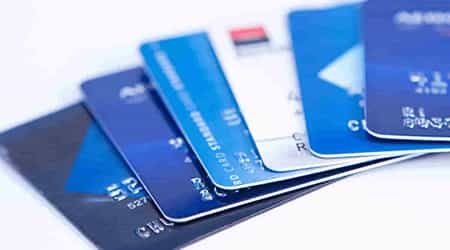
Compare credit cards for travel
Using a credit card
Look for travel-friendly credit cards that you can swipe without being charged a foreign transaction fee — typically 2% to 3% — or international ATM fee. For example, the Capital One Venture Rewards Credit Card will avoid the pesky foreign transaction fees while offering you 2x miles on all purchases. Choosing a travel credit card often means that you get purchase protection, travel insurance or a rental car collision waiver as part of your benefits, helping you get more bang for your buck with your card.
- May have no international ATM fees
- Operator fees may apply
- Cash advance fees
Which credit card issuers are accepted in Europe?
You’ll find Visa and Mastercard to be widely accepted in Europe. Generally speaking, you’ll find merchants in Europe willing to accept American Express cards and even fewer that will take Discover cards. If you have an American Express card, you’ll have the best luck using it in areas frequently traveled by tourists or business travelers.
High
High
High
High
Medium
High
Low
Medium
Compare travel credit cards
Narrow down top travel credit cards by welcome offers, rewards and annual fees to find the best for your budget and financial goals. Select Compare for up to four products to see their benefits side by side.
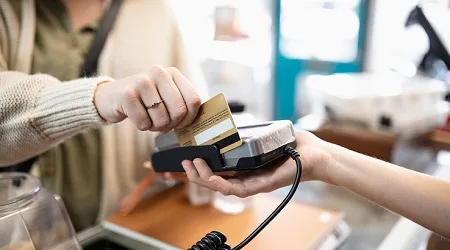
Best international debit cards
Using a debit card
Visa and Mastercard branded debit cards will work throughout Europe without a problem.
There are fees that come with international debit card use — mainly currency conversion fees and ATM fees. With a Betterment Checking debit card, you can get foreign and ATM fees reimbursed as you go to keep your wallet padded on your journey.
- Tip: Debit card providers like Bank of America and Barclays are members of a Global ATM Alliance that waives international ATM fees.
- May have no international ATM fees
- No ATM operator fees on European bank ATMs for cash withdrawals
- International ATM fee and currency conversion fee apply when withdrawing cash
Did you know?
You may be able to avoid the cash-advance fee and interest charges if you preload your own money onto your credit card. The rules are different for each provider.
The catch: You’re waiving some anti-fraud guarantees when you preload your own funds onto your credit card.

Prepaid travel money cards
Using a prepaid travel card
A travel card can hold multiple international currencies, and you save on the fee for currency conversion. You can load euros and GBP on most travel cards, but few other European currencies will be supported.
- Multiple international currencies load euros and GBP on most travel cards
- Currency conversion may apply
- Conversion fee is almost double the charge than on debit and credit cards
Must read: Countries in Europe that haven’t adopted the euro
If you’re traveling to one of these European countries, consider using a debit card or credit card rather than a prepaid travel card. A currency conversion fee applies if you’re spending in a currency not loaded on the card. In most cases, the conversion fee is almost double the charge than on debit and credit cards.
- Bulgaria
- Denmark
- Latvia
- Lithuania
- Romania
“Although the United Kingdom is not a part of the Euro Zone, all travel cards let you load pounds sterling. Preload both euros and pounds and you can use the one card to spend on both sides of the English Channel.”

Cash pickup services
Paying with cash in Europe
There are places where you’ll need cash, but card payments are pretty standard throughout Europe. Contactless card payments are common in places like France and Germany, but cash is necessary if you’re heading off the beaten track — places like smaller Greek islands predominantly use cash.
- Payment flexibility
- Convenience
- Difficult to manage expenses
- Higher risk of theft

Traveler’s checks guide
Using traveler’s checks
It’s not necessary to take traveler’s checks with you on your trip to Europe. Financial institutions offer money-back guarantees if you’re the victim of fraud, and there’s a limited number of places where you can cash your checks.
- Acceptance
- Security
- Can be costly with initial purchase charges
- Not all merchants accept traveler’s checks
European currency
Although the euro was officially introduced in 1999, European citizens didn’t start to see the new notes and coins till sometime in 2003. The notes are all different colors and feature different architectural designs from different eras.
 | 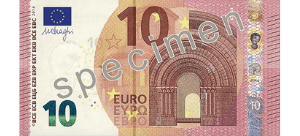 | 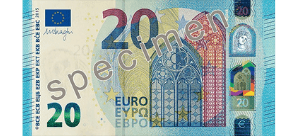 |
 | 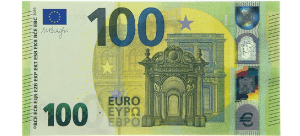 |
The main banks in Europe are:
- HSBC Holdings plc, GBR
- BNP Paribas SA, FRA
- Crédit Agricole Group, FRA
- Deutsche Bank AG, DEU
- Banco Santander SA, ESP
- Barclays plc, GBR
- Société Générale SA, FRA
- Groupe BPCE, FRA
- LLoyds Banking Group plc, GBR
- ING Groep NV, NLD
- UniCredit SpA, ITA
- Royal Bank of Scotland Group plc, GBR
- Intesa Sanpaolo SpA, ITA
- Crédit Mutuel Group, FRA
- UBS Group AG, CHE
Buying currency in the US
If you really want to buy euros before you leave, consider nonbank foreign exchange providers such as Travelex. Travelex lets you order cash online and pick it up at the airport before you leave.
You won’t need euros to pay for your visa when you arrive in Europe. Americans get an automatic 90-day visa on arrival.
Refreshing in: 60s | Tue, Nov 22, 06:42AM GMT
Exchange rate history
It’s very difficult picking the future movement of currency pairs, especially the top two traded currencies in the world. The euro was adopted in 1999, and in 2002 it was introduced as the legal tender — circulating and being used in 12 countries.
The value of the dollar next to the euro dropped significantly in 2008 when an economic crisis made its way around the world. For the last three years, 1 euro has been worth about $1.10 to $1.30.
Find cash and ATMs in Europe
Most airports and banks across Europe will house ATMs inside that are friendly to Visa and Mastercard, though you may see Visa’s Plus or Mastercard’s Maestro or Cirrus symbols on the machines. When you’re withdrawing cash abroad, it’s handy to use an account that doesn’t charge currency conversion or international ATM fees. The Betterment Checking debit card, for example, reimburses these foreign fees, leaving more cash in your account to spend on your travels.
How much should I budget to travel in Europe?
Countries like France and Germany are a touch more expensive than places like Greece, but no matter where you are in Europe, your trip is going to be as low-cost or expensive as you let it be.
Some basic prices across Europe
Accommodation is likely to be your biggest expense when you’re visiting Europe. When it comes to food, if you’re eating in a restaurant, prices will be higher than grabbing a bite on the street (gyros in Greece), trapizzino in Rome, or a jambon et fromage baguette (ham and cheese sandwich — far better than it sounds) in France are all less than five euros.
We’ve included a snapshot of some prices for budget, mid-range and top-end hostels and hotels in different European countries below. All prices are in US dollars.
| Greece (Athens) | Germany (Berlin) | France (Paris) | Italy (Rome) | |
|---|---|---|---|---|
| Accommodation | Hostel $15 per night | Hostel $15–$25 | Hostel $35 per night | Camping $15 per night Hostel $25 per night |
| Meals | Gyros (street) $3.50 Small beer (supermarket) $1–$2.50 | Currywurst (street) $3.50 Beer (supermarket) $2.50 | Baguette (supermarket) $1.75 Cheese (supermarket) $3.50 Average wine (supermarket bottle) $2.25–$8 | Pizza (restaurant) $6–$12 Wine (restaurant) $6–$12 per glass |
| Activities | Walk around the Acropolis and Parthenon (pay $35 to go inside or enjoy the spectacular view from the outside for free) | Walking tour of Berlin Free (although it’s polite to tip the guide a couple of euros at least) | Get the food items mentioned above and camp at the Champ-des-Mars for a view of la Tour Eiffel. | Walking tours of Rome Free (plus a tip for the guide) |
*Prices are approximate and based on summer seasonality and are subject to change.
In most European countries, you can expect to pay anywhere from 10 to 30 euros for a meal in a mid-tier restaurant. Once you hit 5-star restaurants, prices will be comparable to high-end restaurants in the US.
- Tip: If you’re at a restaurant, the plat de jour (plate of the day) will be one of the cheapest and best-tasting dishes on the menu.
Case study: Kyle’s experience

During my Eurotrip, I dropped pins on the map in Amsterdam, Bruges, Paris, Arles and Provence. I brought along my Wells Fargo Propel American Express, Wells Fargo Platinum Visa, Wells Fargo debit card and $500 USD.
When I landed in Amsterdam and was waiting at baggage claim, I spotted a local ATM and withdrew 100 euros using my debit card. The withdrawal cost me $113.49, plus a $5 non-Wells Fargo ATM transaction fee. I didn’t mind the fee because this was enough to buy a SIM card and catch a train downtown — and it left me with about 70 euros.
It didn’t take long to realize that I made a mistake with the credit cards I’d brought. While the Wells Fargo Propel American Express® Card had no foreign transaction fee, I neglected to research what the American Express acceptance rate was in Europe — not good. And I didn’t want to use my Wells Fargo Platinum Card because that came with a 3% fee for overseas purchases.
If I was traveling alone, I would have come home to a credit card bill riddled with fees. Luckily, my partner brought along her United℠ Explorer Card, which is a Visa (high acceptance rate) and has no foreign transaction fees. Since then, I’ve gotten my own United℠ Explorer Card.
As for withdrawing money from ATMs, I only took out another 100 euros for tipping and small purchases. And the $500 USD I brought along? That, and then some, went right to my partner to repay the money we spent on her credit card.
One piece of advice: Don’t be like me and rely on your partner’s credit card.
Travel insurance for Europe
Eurotrips are almost a compulsory rite of passage for young Americans who want to cross the pond, but don’t let your sense of adventure get you in trouble. Protecting your European vacation with travel insurance is a smart way to ensure that you are financially protected against unexpected travel expenses. Travel insurance may cover:
Travel money guide: Europe
Planning a trip to Europe? Discover how you can get the most out of your travel money here.
In this guide
Travel money type
Compare
Locations
Compare more cards
Top picks of 2021
If you’re heading to Europe to sightsee the Eiffel Tower, a Spanish flamenco dance or go on a business trip, you’ll want to find out common methods of payment in the specific country you’re visiting. Most European countries take Visa and Mastercard credit cards as a form of payment. Travel with a Capital One VentureOne Rewards Credit Card to avoid all the foreign transaction fees that most credit cards charge.
However, you’ll need euros or the local currency in some countries like the Czech Republic, where restaurants and smaller shops may not be friendly to plastic. While there are European countries that use their own currency — for example, the Czech Republic and Hungary — the euro is the national currency of the majority of Western and Central European nations.
Our picks for traveling to Europe

Travel card with no annual fee
Capital One VentureOne Rewards Credit Card

Send and receive 50+ currencies right from your phone

28+ currencies and real exchange rates. Crypto deposits aren’t FDIC insured.
Travel card, debit card or credit card?
A prepaid travel card can be a good idea if you’re staying within the European financial zone and the United Kingdom. If you’re traveling to another destination like Croatia, the Czech Republic, Sweden or Hungary, you’re better off using a credit card that waives the fee for foreign transactions — no ATM fees are a bonus too.
While there are travel cards that don’t charge you for currency conversion — the back-end fees, exchange rate margin and juggling another account make a travel-friendly debit card a better option.
A credit card and debit card combination makes for a good mix to access cash and make purchases. A credit card is a must: Interest-free cards give you time to pay back your purchases, some cards offer free travel insurance and credit cards give you peace of mind through access to emergency cash.
Don’t use a credit card for cash withdrawals — it’s almost too expensive to justify. Use a debit card or a prepaid travel card to withdraw cash.
These are your options for spending money in Europe

Compare credit cards for travel
Using a credit card
Look for travel-friendly credit cards that you can swipe without being charged a foreign transaction fee — typically 2% to 3% — or international ATM fee. For example, the Capital One Venture Rewards Credit Card will avoid the pesky foreign transaction fees while offering you 2x miles on all purchases. Choosing a travel credit card often means that you get purchase protection, travel insurance or a rental car collision waiver as part of your benefits, helping you get more bang for your buck with your card.
- May have no international ATM fees
- Operator fees may apply
- Cash advance fees
Which credit card issuers are accepted in Europe?
You’ll find Visa and Mastercard to be widely accepted in Europe. Generally speaking, you’ll find merchants in Europe willing to accept American Express cards and even fewer that will take Discover cards. If you have an American Express card, you’ll have the best luck using it in areas frequently traveled by tourists or business travelers.
High
High
High
High
Medium
High
Low
Medium
Compare travel credit cards
Narrow down top travel credit cards by welcome offers, rewards and annual fees to find the best for your budget and financial goals. Select Compare for up to four products to see their benefits side by side.

Best international debit cards
Using a debit card
Visa and Mastercard branded debit cards will work throughout Europe without a problem.
There are fees that come with international debit card use — mainly currency conversion fees and ATM fees. With a Betterment Checking debit card, you can get foreign and ATM fees reimbursed as you go to keep your wallet padded on your journey.
- Tip: Debit card providers like Bank of America and Barclays are members of a Global ATM Alliance that waives international ATM fees.
- May have no international ATM fees
- No ATM operator fees on European bank ATMs for cash withdrawals
- International ATM fee and currency conversion fee apply when withdrawing cash
Did you know?
You may be able to avoid the cash-advance fee and interest charges if you preload your own money onto your credit card. The rules are different for each provider.
The catch: You’re waiving some anti-fraud guarantees when you preload your own funds onto your credit card.

Prepaid travel money cards
Using a prepaid travel card
A travel card can hold multiple international currencies, and you save on the fee for currency conversion. You can load euros and GBP on most travel cards, but few other European currencies will be supported.
- Multiple international currencies load euros and GBP on most travel cards
- Currency conversion may apply
- Conversion fee is almost double the charge than on debit and credit cards
Must read: Countries in Europe that haven’t adopted the euro
If you’re traveling to one of these European countries, consider using a debit card or credit card rather than a prepaid travel card. A currency conversion fee applies if you’re spending in a currency not loaded on the card. In most cases, the conversion fee is almost double the charge than on debit and credit cards.
- Bulgaria
- Denmark
- Latvia
- Lithuania
- Romania
“Although the United Kingdom is not a part of the Euro Zone, all travel cards let you load pounds sterling. Preload both euros and pounds and you can use the one card to spend on both sides of the English Channel.”

Cash pickup services
Paying with cash in Europe
There are places where you’ll need cash, but card payments are pretty standard throughout Europe. Contactless card payments are common in places like France and Germany, but cash is necessary if you’re heading off the beaten track — places like smaller Greek islands predominantly use cash.
- Payment flexibility
- Convenience
- Difficult to manage expenses
- Higher risk of theft

Traveler’s checks guide
Using traveler’s checks
It’s not necessary to take traveler’s checks with you on your trip to Europe. Financial institutions offer money-back guarantees if you’re the victim of fraud, and there’s a limited number of places where you can cash your checks.
- Acceptance
- Security
- Can be costly with initial purchase charges
- Not all merchants accept traveler’s checks
European currency
Although the euro was officially introduced in 1999, European citizens didn’t start to see the new notes and coins till sometime in 2003. The notes are all different colors and feature different architectural designs from different eras.
 |  |  |
 |  |
The main banks in Europe are:
- HSBC Holdings plc, GBR
- BNP Paribas SA, FRA
- Crédit Agricole Group, FRA
- Deutsche Bank AG, DEU
- Banco Santander SA, ESP
- Barclays plc, GBR
- Société Générale SA, FRA
- Groupe BPCE, FRA
- LLoyds Banking Group plc, GBR
- ING Groep NV, NLD
- UniCredit SpA, ITA
- Royal Bank of Scotland Group plc, GBR
- Intesa Sanpaolo SpA, ITA
- Crédit Mutuel Group, FRA
- UBS Group AG, CHE
Buying currency in the US
If you really want to buy euros before you leave, consider nonbank foreign exchange providers such as Travelex. Travelex lets you order cash online and pick it up at the airport before you leave.
You won’t need euros to pay for your visa when you arrive in Europe. Americans get an automatic 90-day visa on arrival.
Refreshing in: 60s | Tue, Nov 22, 06:42AM GMT
Exchange rate history
It’s very difficult picking the future movement of currency pairs, especially the top two traded currencies in the world. The euro was adopted in 1999, and in 2002 it was introduced as the legal tender — circulating and being used in 12 countries.
The value of the dollar next to the euro dropped significantly in 2008 when an economic crisis made its way around the world. For the last three years, 1 euro has been worth about $1.10 to $1.30.
Find cash and ATMs in Europe
Most airports and banks across Europe will house ATMs inside that are friendly to Visa and Mastercard, though you may see Visa’s Plus or Mastercard’s Maestro or Cirrus symbols on the machines. When you’re withdrawing cash abroad, it’s handy to use an account that doesn’t charge currency conversion or international ATM fees. The Betterment Checking debit card, for example, reimburses these foreign fees, leaving more cash in your account to spend on your travels.
How much should I budget to travel in Europe?
Countries like France and Germany are a touch more expensive than places like Greece, but no matter where you are in Europe, your trip is going to be as low-cost or expensive as you let it be.
Some basic prices across Europe
Accommodation is likely to be your biggest expense when you’re visiting Europe. When it comes to food, if you’re eating in a restaurant, prices will be higher than grabbing a bite on the street (gyros in Greece), trapizzino in Rome, or a jambon et fromage baguette (ham and cheese sandwich — far better than it sounds) in France are all less than five euros.
We’ve included a snapshot of some prices for budget, mid-range and top-end hostels and hotels in different European countries below. All prices are in US dollars.
| Greece (Athens) | Germany (Berlin) | France (Paris) | Italy (Rome) | |
|---|---|---|---|---|
| Accommodation | Hostel $15 per night | Hostel $15–$25 | Hostel $35 per night | Camping $15 per night Hostel $25 per night |
| Meals | Gyros (street) $3.50 Small beer (supermarket) $1–$2.50 | Currywurst (street) $3.50 Beer (supermarket) $2.50 | Baguette (supermarket) $1.75 Cheese (supermarket) $3.50 Average wine (supermarket bottle) $2.25–$8 | Pizza (restaurant) $6–$12 Wine (restaurant) $6–$12 per glass |
| Activities | Walk around the Acropolis and Parthenon (pay $35 to go inside or enjoy the spectacular view from the outside for free) | Walking tour of Berlin Free (although it’s polite to tip the guide a couple of euros at least) | Get the food items mentioned above and camp at the Champ-des-Mars for a view of la Tour Eiffel. | Walking tours of Rome Free (plus a tip for the guide) |
*Prices are approximate and based on summer seasonality and are subject to change.
In most European countries, you can expect to pay anywhere from 10 to 30 euros for a meal in a mid-tier restaurant. Once you hit 5-star restaurants, prices will be comparable to high-end restaurants in the US.
- Tip: If you’re at a restaurant, the plat de jour (plate of the day) will be one of the cheapest and best-tasting dishes on the menu.
Case study: Kyle’s experience

During my Eurotrip, I dropped pins on the map in Amsterdam, Bruges, Paris, Arles and Provence. I brought along my Wells Fargo Propel American Express, Wells Fargo Platinum Visa, Wells Fargo debit card and $500 USD.
When I landed in Amsterdam and was waiting at baggage claim, I spotted a local ATM and withdrew 100 euros using my debit card. The withdrawal cost me $113.49, plus a $5 non-Wells Fargo ATM transaction fee. I didn’t mind the fee because this was enough to buy a SIM card and catch a train downtown — and it left me with about 70 euros.
It didn’t take long to realize that I made a mistake with the credit cards I’d brought. While the Wells Fargo Propel American Express® Card had no foreign transaction fee, I neglected to research what the American Express acceptance rate was in Europe — not good. And I didn’t want to use my Wells Fargo Platinum Card because that came with a 3% fee for overseas purchases.
If I was traveling alone, I would have come home to a credit card bill riddled with fees. Luckily, my partner brought along her United℠ Explorer Card, which is a Visa (high acceptance rate) and has no foreign transaction fees. Since then, I’ve gotten my own United℠ Explorer Card.
As for withdrawing money from ATMs, I only took out another 100 euros for tipping and small purchases. And the $500 USD I brought along? That, and then some, went right to my partner to repay the money we spent on her credit card.
One piece of advice: Don’t be like me and rely on your partner’s credit card.
Travel insurance for Europe
Eurotrips are almost a compulsory rite of passage for young Americans who want to cross the pond, but don’t let your sense of adventure get you in trouble. Protecting your European vacation with travel insurance is a smart way to ensure that you are financially protected against unexpected travel expenses. Travel insurance may cover:
Europe Travel Tips: 50 Things You Should Know Before Going to Europe

Europe is my favorite place to travel. Despite having traveled extensively around the world, it’s still the place I return to again and again. We travel Europe at least once a year, and even lived there for an entire year!
But you don’t have to stay for an entire year to get a feel for this amazing continent. Even just one week in Europe at any of these incredible destinations is enough to make you fall in love!
There are so many incredible places to go in Europe with so many different countries and cultures to explore without actually traveling very far! Traveling through Europe can seem a little overwhelming if you’ve never been before, so I wanted to share a few things you should know before going to Europe. This will make your first visit much more enjoyable.
If you’re traveling with kids, be sure to read these 10 tips for taking kids to Europe.
1. Budget for Your Trip
Before you even purchase tickets to Europe, sit down, like a responsible adult, and plan a budget for your trip to Europe. Make sure it’s realistic and make sure it’s something that you can afford right now. While I love to rack up credit card points by using them on travel, it’s important to be reasonable. The good news is that Europe can be done fairly inexpensively, in fact, we actually spent less money traveling Europe for a year than we did staying home!
How much does it cost to travel Europe?
That answer really depends on how many people are in your party, what style of travel you like, and how budget you’re willing to go. You can travel Europe cheap if you’re smart about it, but I would plan on $1,000/person for each week just to be safe.
The cheapest way to travel Europe is to plan ahead and shop around for the best deals on accommodation, transportation, and airfare because there are tons of Europe travel deals out there on the internet! If you want to know how to travel Europe cheap, you can read about how we actually spend less money living there for a year than we did at home.
Be sure to read my guide to planning financially for a vacation, which includes a Europe travel budget calculator so that you can find out just how much your trip will cost.
 2. Save for Your Trip
2. Save for Your Trip
Now that you have your budget set in place for visiting Europe you can start saving! These are some easy ways that I save money for travel. You don’t need to turn over your whole paycheck, but you’ll need to make saving for travel a priority so you don’t go into crazy debt to be able to afford it. Credit cards definitely have their place and can be useful for earning points, but be sure you pay it off each month! If you can’t afford to do so, maybe don’t spend it. This is why having a travel fund is so important. When those travel deals pop up you’ll be ready to jump with your special savings!
3. Check Europe Travel Visa Requirements
Americans traveling to Europe won’t need a Visa to travel to most countries on the continent. Europe travel visas are a little complicated, but you can learn more about them here. If you’re looking to stay in Europe for more than 90 days, read this.
Beginning in 2023, US citizens and citizens of other previously non-visa countries coming to the EU will now need a ETIAS Visa. Read here for what that means for you.
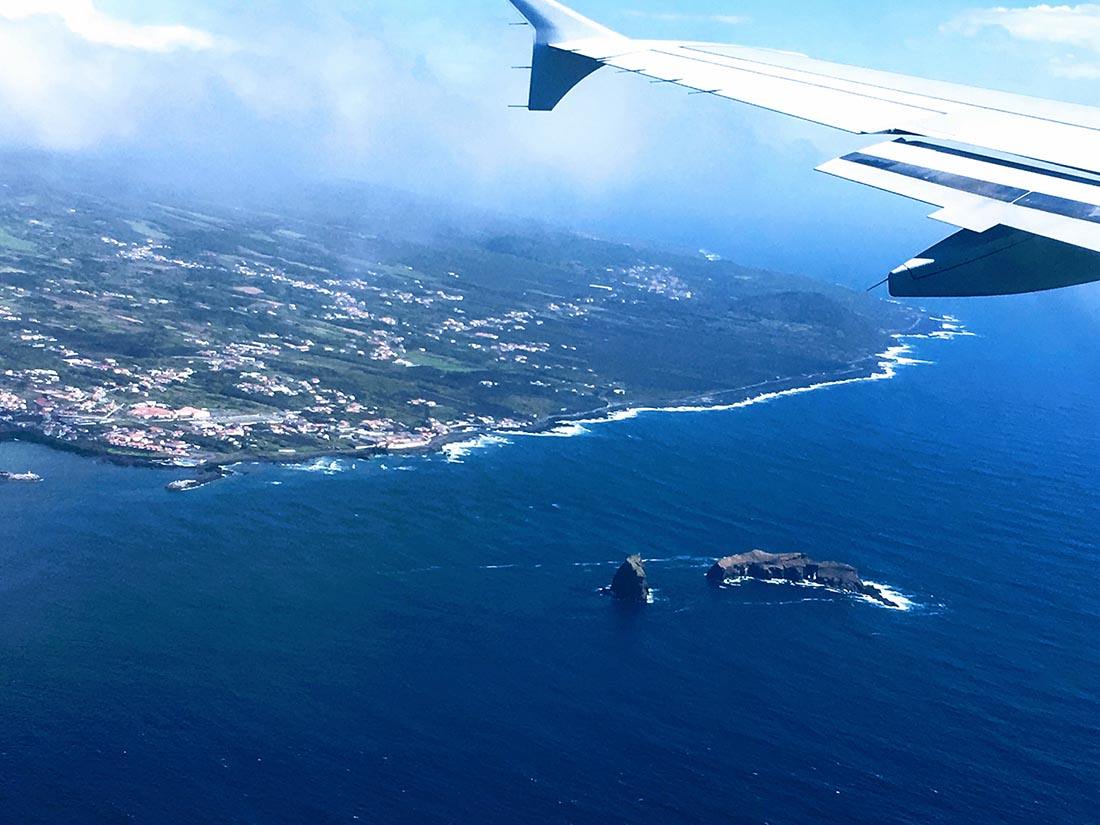
4. Buy Flights Early
You can usually get the best deals to Europe by booking early. Start keeping an eye out for cheap flights as early as possible. Read my guide to finding cheap flights to be sure you’re getting the best deals!
5. Read Books About your Destinations
Once you decide where you’re going in Europe, find books to read about it. I don’t mean guide books, although those can be great. I love these ones. I mean books, both fiction and nonfiction, that tell a story set in Europe. It can make your trip so much more meaningful when you have some connections.
You can read this awesome list of 100+ books organized by continent that will inspire you to travel.
6. Pack Light
Pack light, especially if you’ll be traveling around Europe and taking public transportation. There’s nothing more frustrating than trying to haul heavy luggage around on trains! I promise!
Make a packing list, then take less than you think you’ll need. If you’re going to Europe for more than one week, pack for one week, then plan on washing and/or re-wearing what you’ve brought. There’s nothing shameful about washing your laundry in a tub or sink or even spending some time with the locals at the laundromat! It could be an adventure!
If you want to wash your own clothes more efficiently, consider getting one of these awesome laundry wash bags that make laundry day way easier and more fun!
7. Bring Melatonin to Beat Jetlag
Consult your doctor before taking any medication. I am not a doctor, but this is what works for me. I buy the gummy melatonin (because I have kids) and take it with me every time I travel. Sleeping in a new bed is hard enough, but add a 6 hour time difference once you’re in Europe and it’s all over! When you’re ready for bed, take about 3-10 mg of melatonin which will help you shift your internal clock. Melatonin is an over the counter sleep aid and can be purchased at any drug store or grocery store. I really like this one because it tastes delicious and is 5mg (a good amount for adults) and this one for kids or smaller people since it’s only 2.5 mg (which is hard to find in stores).
Be sure to pull down the shades and make it as dark as possible. I like to use this amazing eye mask to achieve complete darkness! I love that it leaves space for your eyelashes, which is a huge selling point for me! And yes, it does look like a bra for your eyes!

8. Don’t Try to See it All!
This is probably one of my best Europe travel tips! T raveling to Europe for the first time will be so exciting and you’re going to want to see as much as you can. Europe is filled with so many bucket list destinations screaming to be visited! Unless you’re staying in Europe for a year, don’t try to see it all in one trip! Europe is huge and each country is so different. Just one city could honestly keep you busy for a lifetime!
Even though it’s so easy to travel around Europe, don’t spend all of your time on a train, plane or car! Plus, just more reasons to come back right?! I would stick to 2-3 cities in one visit depending on the length of your trip. The best way to travel Europe is slowly! Take your time, you can always come back.
If you only have one week, these 20 One-Week Europe Trip Itinerary Ideas will help you decide which cities to visit.
Source https://www.finder.com/travel-money/europe
Source https://www.finder.com/travel-money/europe
Source https://wanderlustcrew.com/europe-travel-tips/
